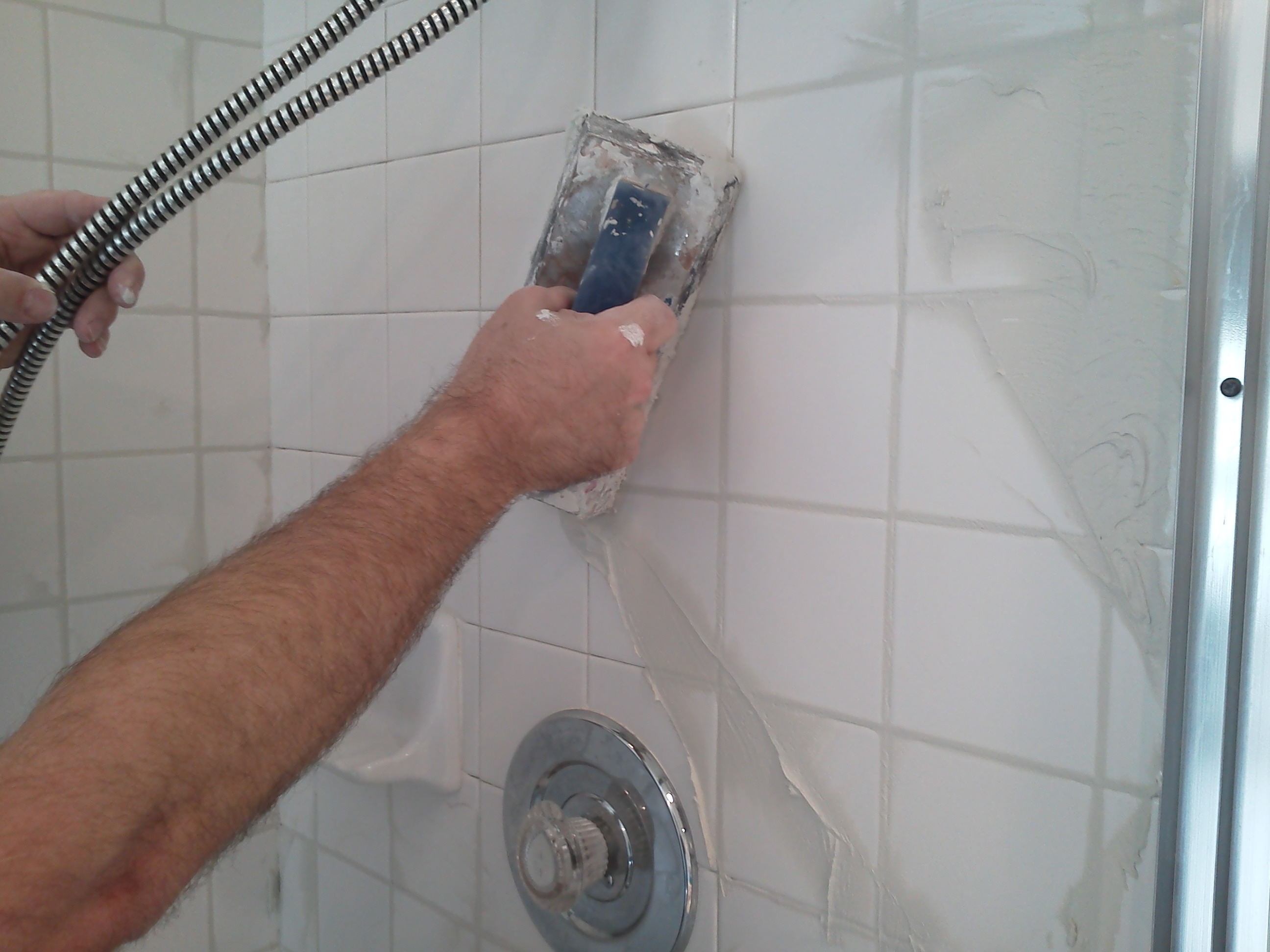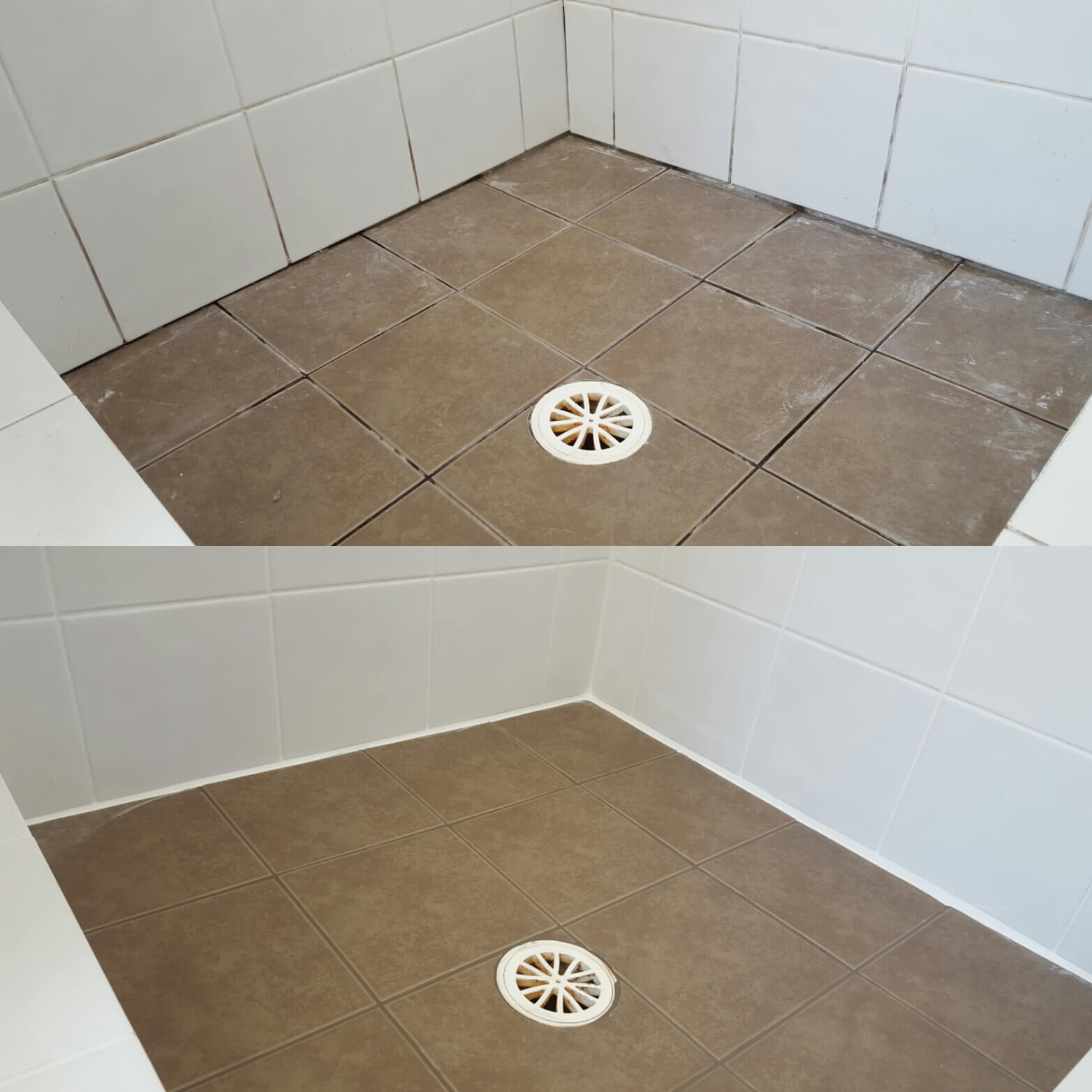Understanding the Need for Grout Redo
:max_bytes(150000):strip_icc()/How_to_Regrout_Ceramic_Tile_64434_04-7d62a1243b314b628e8125818455cb67.jpg)
Your bathroom is a sanctuary, a place to unwind and refresh. But over time, even the most pristine bathroom can show signs of wear and tear, especially in the grout. Grout, the mortar that fills the gaps between tiles, is susceptible to moisture, mildew, and everyday wear and tear. When grout starts to deteriorate, it not only affects the aesthetics of your bathroom but also compromises its functionality.
Signs of Grout Deterioration, Redo grout in bathroom
Damaged grout can significantly impact the look and functionality of your bathroom. Here are some common signs that your bathroom grout needs attention:
- Discoloration: Grout can become discolored due to mildew, mold, or simply the accumulation of dirt and grime. This can make your bathroom look dingy and unhygienic.
- Cracking and Chipping: Over time, grout can crack or chip due to expansion and contraction from moisture and temperature changes. This can create gaps that allow water to seep behind the tiles, leading to mold growth and potential structural damage.
- Loose Grout: If the grout is loose or crumbling, it can create uneven surfaces that are difficult to clean and can even pose a safety hazard.
- Mildew and Mold Growth: Grout is a prime breeding ground for mildew and mold, especially in humid environments. This can not only make your bathroom look unsightly but also pose health risks.
Impact of Damaged Grout
Damaged grout can have a significant impact on your bathroom’s aesthetics and functionality:
- Aesthetics: Discolored, cracked, or chipped grout can make your bathroom look outdated, unhygienic, and unattractive.
- Functionality: Damaged grout can create uneven surfaces that are difficult to clean, leading to the buildup of dirt and grime. It can also allow water to seep behind the tiles, leading to mold growth and potential structural damage.
- Safety: Loose or crumbling grout can create uneven surfaces that are a tripping hazard, especially for children and elderly individuals.
Assessing the Condition of Bathroom Grout
Before you decide to redo your grout, it’s important to assess its condition. Here’s a step-by-step guide:
- Visual Inspection: Carefully inspect the grout lines for any signs of discoloration, cracking, chipping, or looseness.
- Touch Test: Run your fingers along the grout lines to check for any loose or crumbling grout.
- Moisture Check: Look for any signs of water damage or mold growth around the grout lines.
- Professional Evaluation: If you’re unsure about the condition of your grout, it’s always best to consult a professional tile and grout specialist for a thorough evaluation.
Preparing for Grout Redo

Before diving into the exciting (and sometimes messy) world of grout redo, you gotta be prepared, bro! It’s like prepping for a big adventure – gotta have the right gear and know the safety rules, right? Let’s break it down, step by step.
Necessary Tools and Materials
You’ll need a few things to get the job done right. Think of it as your grout redo toolkit:
- Grout Removal Tool: This is the hero of the show. It’s like a tiny chisel that helps you scrape away the old grout. There are different types, so choose one that’s right for your project.
- Grout Saw: This is a saw specifically designed for cutting grout lines. It’s like a mini-saw for your grout, helping you make precise cuts.
- Bucket: You’ll need a bucket to mix the grout and hold the water. Think of it as your grout mixing station.
- Grout Float: This is a tool used to apply and smooth the new grout. It’s like a little spatula for your grout, making it look smooth and even.
- Grout Sponge: This is used to clean up excess grout and smooth out the grout lines. It’s like a grout cleaning buddy, making sure everything looks neat and tidy.
- Gloves: These protect your hands from the grout and the chemicals you might be using. Think of them as your grout-fighting armor.
- Safety Glasses: These protect your eyes from flying debris while you’re working. It’s like a shield for your peepers.
- Mask: This is important for protecting your lungs from dust and fumes. Think of it as a respirator for your grout project.
- New Grout: This is the star of the show! Choose the right color and type of grout for your bathroom. It’s like picking out a new outfit for your bathroom tiles.
- Sealant: This helps protect the new grout from stains and moisture. It’s like a grout raincoat, keeping it looking fresh and clean.
Safety Precautions
Grout removal products can be pretty potent, so safety is key. Think of it like a superhero code:
- Ventilation: Always work in a well-ventilated area. Open windows and doors to let fresh air circulate. It’s like giving your bathroom a breath of fresh air.
- Gloves and Mask: Wear gloves and a mask to protect your skin and lungs from chemicals. Think of them as your safety gear.
- Eye Protection: Wear safety glasses to protect your eyes from flying debris. It’s like a shield for your peepers.
- Read Instructions: Carefully read the instructions on the grout removal product before using it. It’s like reading the manual before using a new gadget.
- Test Area: Test the grout removal product on a small, inconspicuous area first. This helps you see how it reacts with the grout and tile. It’s like a trial run before the big show.
Protecting Surrounding Surfaces and Fixtures
You don’t want to end up with grout splattered everywhere, right? Think of it as a clean grout project:
- Cover Fixtures: Cover any fixtures like faucets, showerheads, and towel bars with plastic sheeting. It’s like giving them a protective shield.
- Tape Off Areas: Tape off areas that you don’t want to get grout on, like walls, cabinets, and floors. It’s like creating a grout-free zone.
- Drop Cloths: Lay down drop cloths to protect the floor from dust and debris. It’s like a safety net for your floor.
Grout Removal and Application Techniques: Redo Grout In Bathroom

The first step in a grout redo is removing the old grout. This process requires careful attention to detail and the right tools. There are several methods for removing old grout, each with its advantages and disadvantages. After the old grout is removed, the new grout can be applied, ensuring a smooth and durable finish.
Grout Removal Methods
The choice of grout removal method depends on the condition of the existing grout, the type of tile, and the desired level of precision. Here are some common methods:
- Scraping: This method involves using a scraper, a tool with a sharp blade, to remove the old grout. It is suitable for loose or crumbling grout, but it may not be effective for deeply embedded grout.
- Chiseling: A chisel and hammer are used to chip away the old grout. This method is more aggressive than scraping and is effective for removing stubborn or deeply embedded grout. However, it requires care to avoid damaging the surrounding tiles.
- Grout Removal Solutions: These solutions are chemical-based and can soften the grout, making it easier to remove. They are effective for both loose and deeply embedded grout, but they require careful application and ventilation to avoid damage to the surrounding tiles and health risks.
Applying New Grout
Once the old grout is removed, the next step is applying the new grout. Here’s a step-by-step guide:
- Mixing the Grout: Follow the manufacturer’s instructions for mixing the grout with water. Use a mixing tool to ensure the grout is thoroughly blended and free of lumps.
- Spreading the Grout: Use a grout float to spread the grout into the joints between the tiles. Apply the grout diagonally to the joints, pressing it firmly to ensure it fills the entire space.
- Cleaning Excess Grout: After spreading the grout, remove any excess grout with a damp sponge. Work quickly and efficiently to avoid the grout from setting too hard.
- Cleaning the Tiles: Once the grout has set slightly, clean the tiles with a damp sponge. This will remove any remaining grout residue and leave the tiles clean and shiny.
Curing and Sealing
Proper curing and sealing are crucial for ensuring the longevity and durability of the new grout.
Curing allows the grout to harden and reach its full strength.
Sealing prevents stains and water damage.
- Curing: The curing time for grout can vary depending on the type of grout and the ambient temperature. It is important to follow the manufacturer’s instructions for curing time.
- Sealing: After the grout has cured, apply a grout sealer to protect it from stains and water damage. Apply the sealer according to the manufacturer’s instructions.
